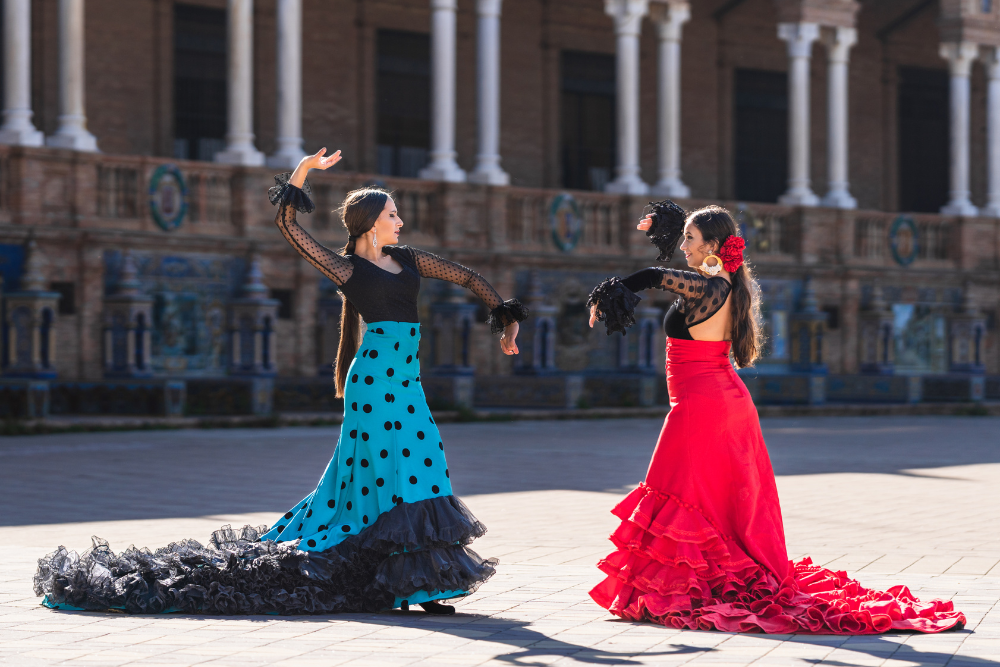Flamenco, one of Spain’s most iconic cultural traditions, is not just about the music and dance—it’s also about the vibrant and elegant dresses that bring the performance to life. These traditional outfits are deeply rooted in Spanish heritage, blending artistry and functionality. Here’s a guide to understanding and appreciating the beauty of Flamenco dresses.
1. The History of Flamenco Dresses
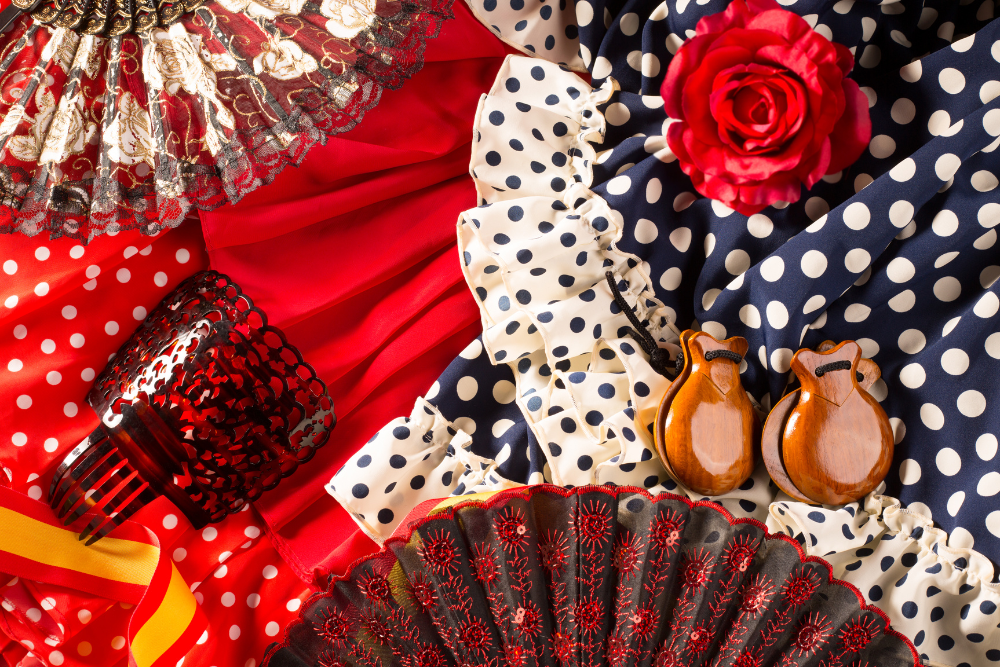
Flamenco dresses, or trajes de flamenca, originated in Andalusia, the birthplace of Flamenco itself.
- Origins: Initially, these dresses were worn by Andalusian peasants and gypsies during fairs and festivities.
- Evolution: Over time, the dresses became more elaborate, incorporating luxurious fabrics and intricate designs as Flamenco gained popularity.
- Cultural Significance: Today, Flamenco dresses symbolize Spanish culture and are an integral part of Flamenco performances and festivals.
2. Key Features of Flamenco Dresses
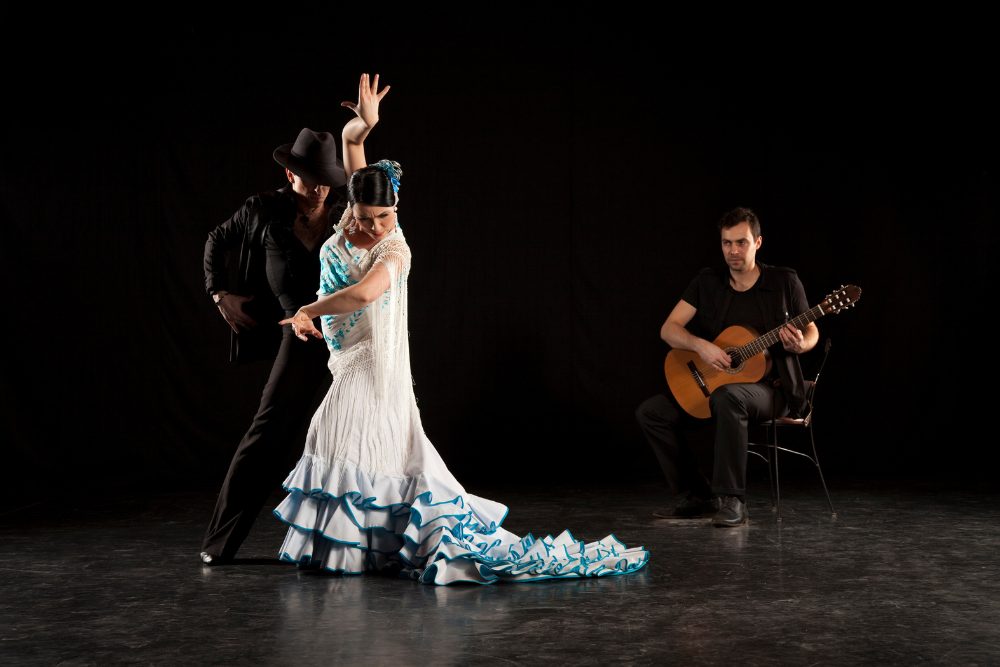
The Flamenco dress is known for its dramatic silhouette and eye-catching details.
- Ruffles (Volantes): Layers of ruffles adorn the hem and sleeves, adding movement and flair.
- Fitted Bodice: The tight bodice emphasizes the dancer’s movements and posture.
- Bold Colors and Patterns: Vibrant hues like red, black, and polka dots are traditional, though modern designs include a wider palette.
- Accessories: Often paired with ornate shawls, flowers in the hair, and statement jewelry.
3. Modern Variations
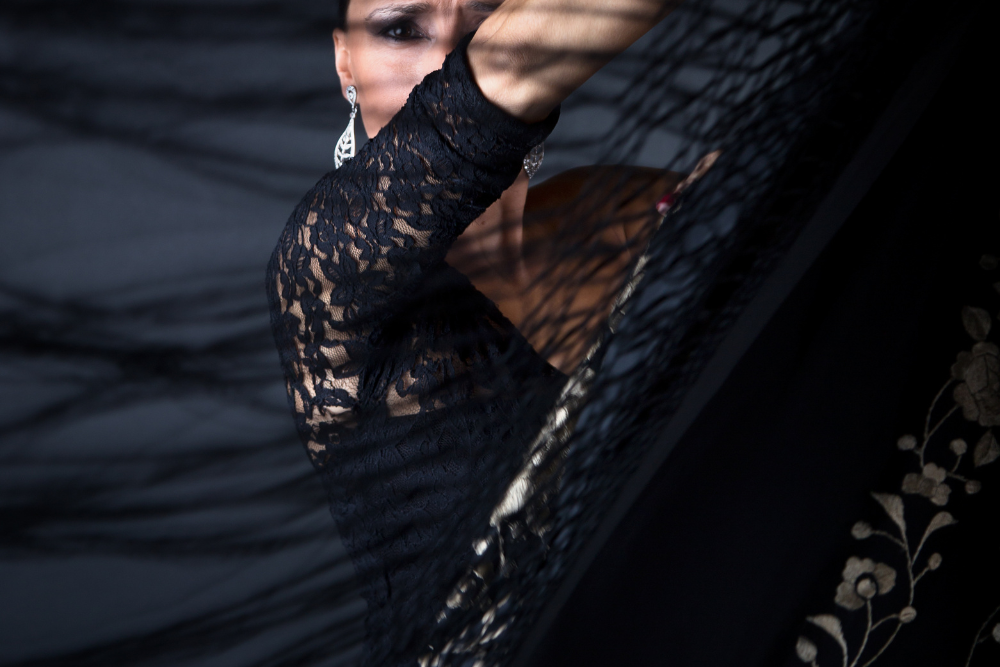
While traditional designs remain popular, contemporary Flamenco dresses incorporate new elements to reflect changing tastes.
- Innovative Fabrics: Designers now use lightweight materials for better comfort and mobility.
- Hybrid Styles: Some dresses blend traditional and modern aesthetics, featuring asymmetrical cuts and unconventional patterns.
- Customization: Many performers opt for bespoke dresses tailored to their preferences and performance needs.
4. Where to Experience Flamenco Dresses
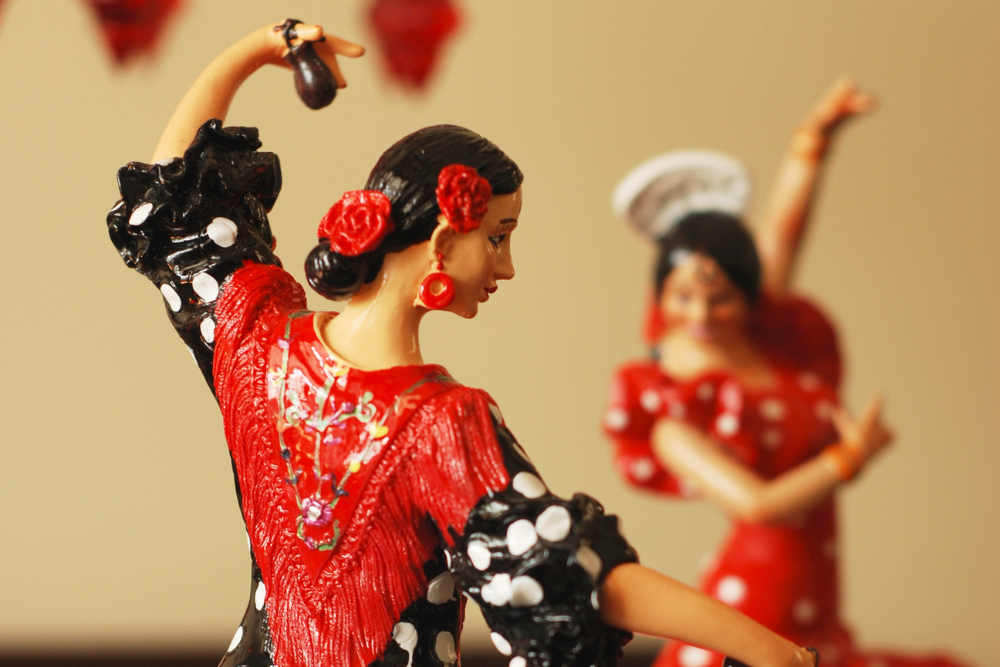
To truly appreciate Flamenco dresses, immerse yourself in the culture by attending performances and festivals.
- Flamenco Shows: Venues in Seville, Granada, and Madrid showcase dancers in traditional attire.
- Feria de Abril (April Fair): Held in Seville, this event features locals dressed in Flamenco attire, celebrating with music and dance.
- Museums: Visit Flamenco museums in Andalusia to learn about the history and craftsmanship behind these iconic dresses.
5. Tips for Buying or Renting a Flamenco Dress
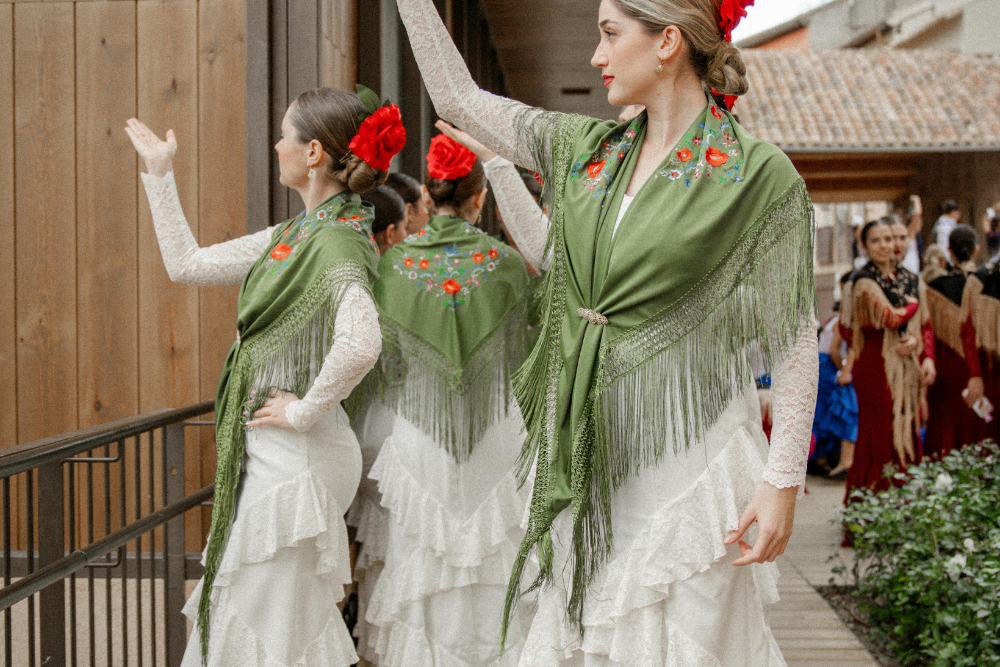
If you’re inspired to own a piece of Flamenco culture, here’s what you need to know:
- Authenticity: Look for dresses made in Spain to ensure traditional craftsmanship.
- Fit: Flamenco dresses are designed to be form-fitting, so choose a size that complements your body shape.
- Purpose: Decide whether the dress is for dancing or as a keepsake, as this will influence your choice of material and design.
- Rentals: Many shops in Andalusia offer rental options for festivals and events.
Conclusion
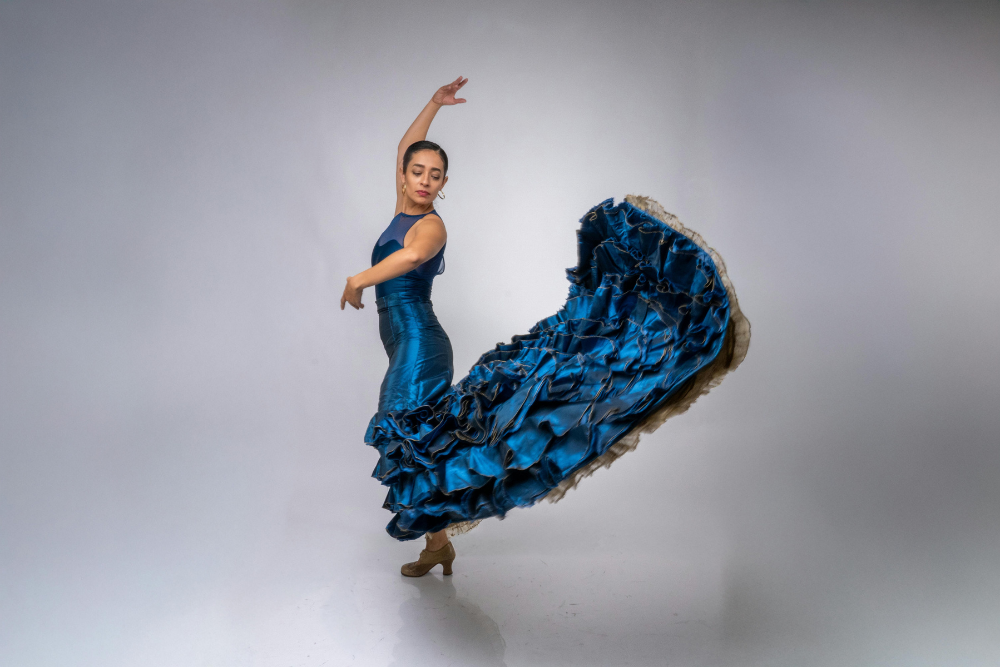
Spain’s traditional Flamenco dresses are more than just costumes; they are a celebration of art, culture, and identity. Whether you’re watching a mesmerizing performance or participating in a festival, the elegance and vibrancy of these dresses are sure to leave a lasting impression. Embrace the spirit of Flamenco by exploring its rich traditions and iconic attire.



